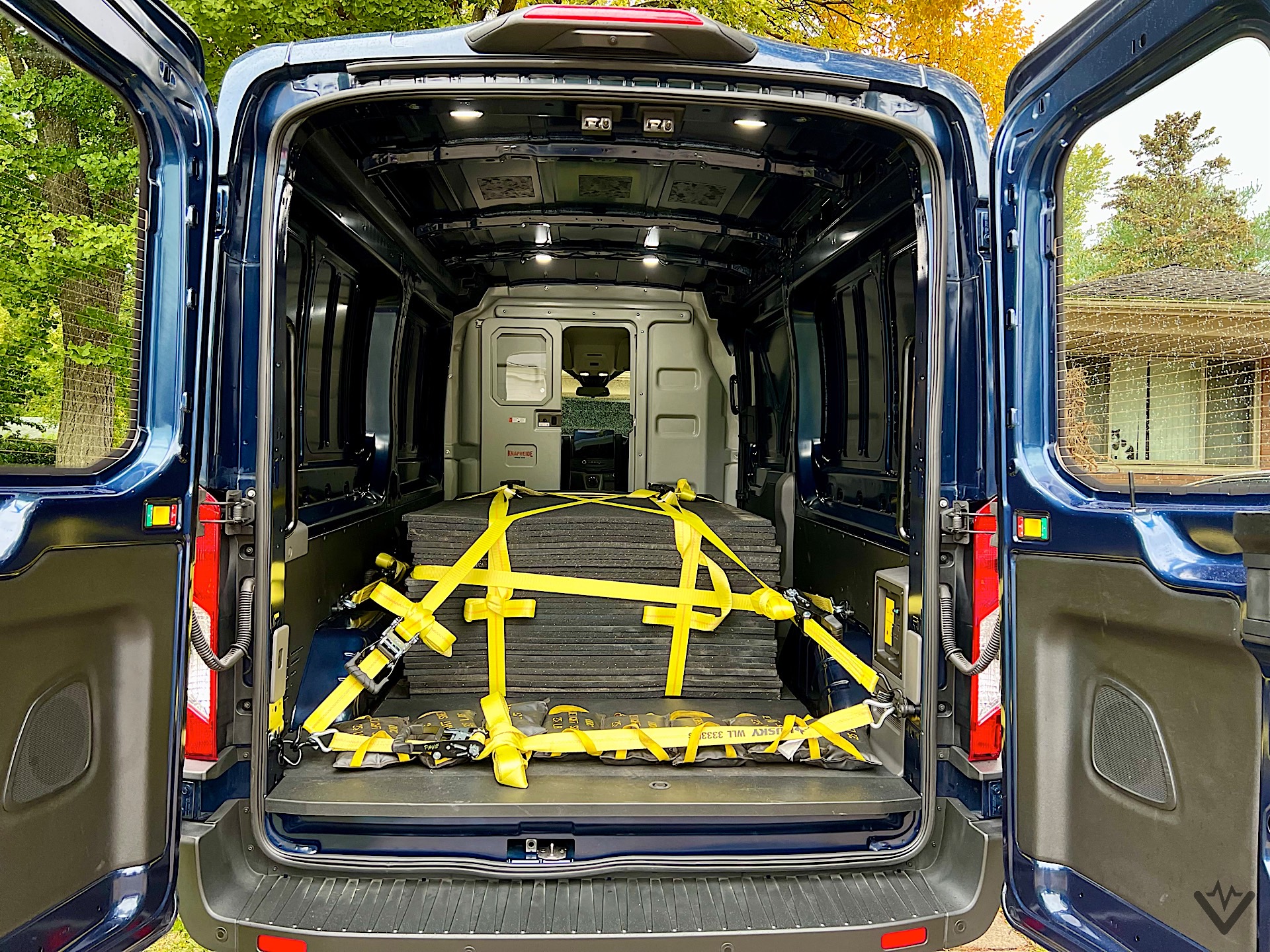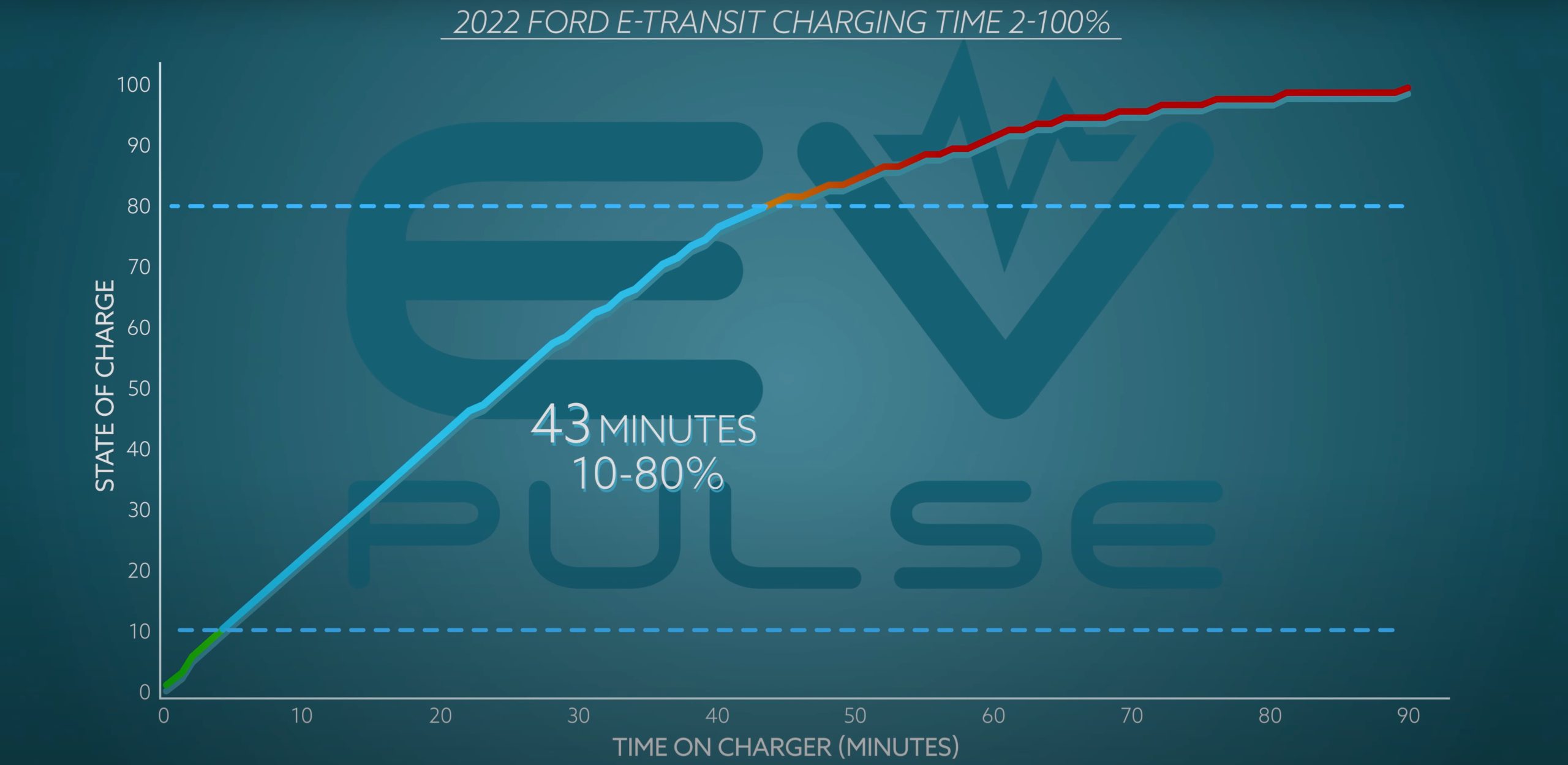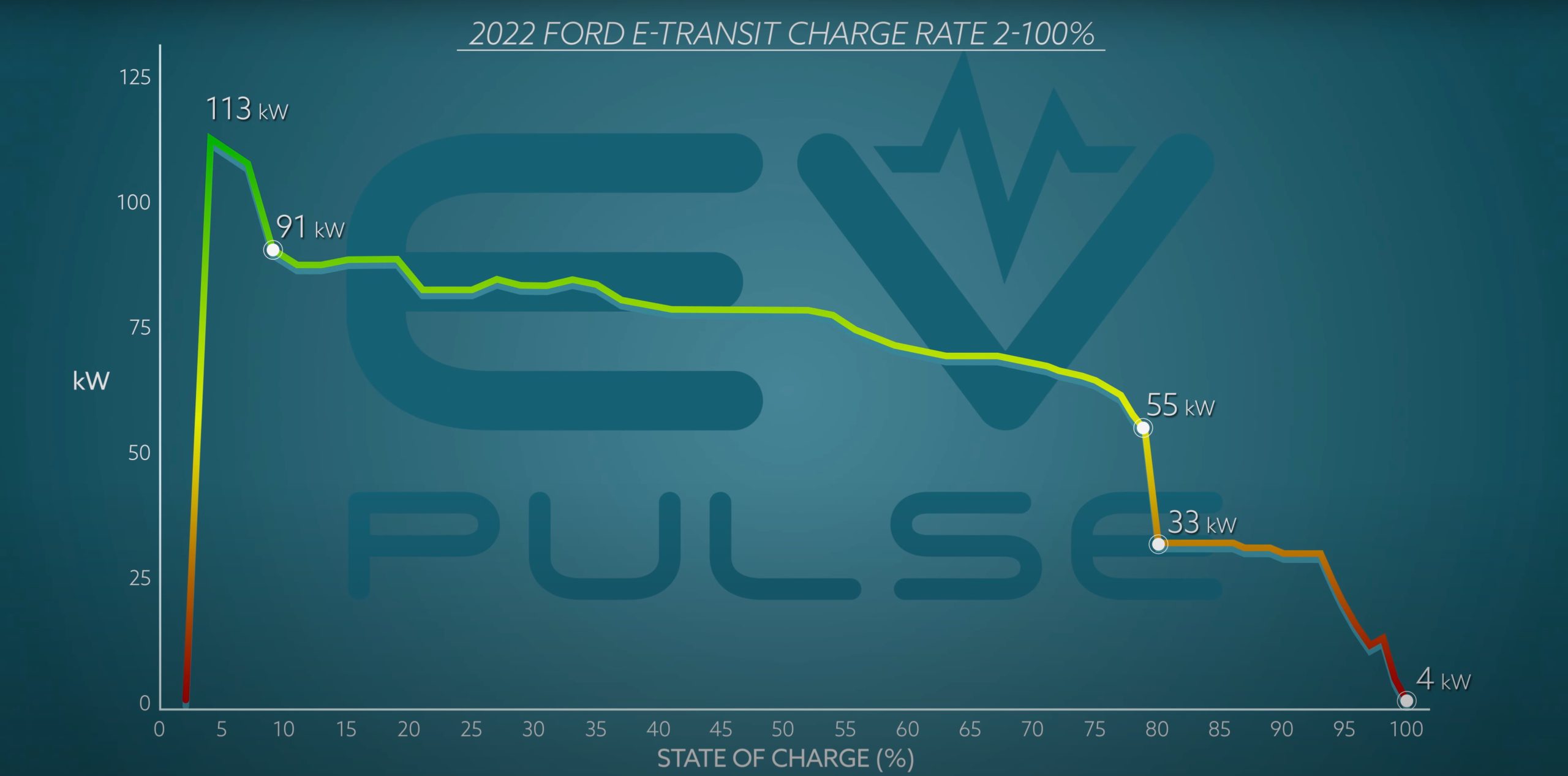When we shared our first drive review and video back in January of this year with the 2022 Ford E-Transit, a lot of you had a lot of things to say about it. Let’s look at some of the YouTube comments.
“I don’t drive around in an empty van. Has anyone actually done a real world range test on these things?”
“gotta get the range up. full loaded const. van cut miles way back.”
“Loaded, this $42K EV will get 80 to 90 miles range. This short range EV is just Ford virtue signaling while hurting the planet and wasting valuable resources.”
“It doesn’t matter, 120 miles is less than 2 hours drive time, it’s criminal to waste resources to make them.”
In addition to some comments informing me that I talk with my hands, a lot of you are saying that when you actually put a load in the van, the range because completely useless.
Ford tests the range of the E-Transit at half-payload. That is to simulate the weight of a delivery van. A delivery van would start the day fully-loaded, and then at the end of the route be completely empty.
That makes sense, and it’s also why companies like Blue Arc test the same way.
Yet the question of how far it can go completely loaded remains unanswered. Well, until now.
Ford E-Transit maximum range test

We asked Ford to send us an E-Transit with enough weight to reach the van’s 9,500 pound GVWR. They then delivered us a medium roof, medium wheelbase model with nearly 4,000 pounds of rubber mats in the back.
On the scales, our van was 396 pounds lighter than the maximum GVWR. When you factor in humans and camera equipment, we were right at max.
2022 Ford E-Transit medium roof, medium wheelbase:
- Vehicle empty weight: 6,152 lbs.
- Vehicle w/ payload: 9,114 lbs.
- Vehicle GVWR: 9,500 lbs.
- Payload weight: 2,962 lbs.
- Passengers and camera weight: 396 lbs.-ish
- Empty weight + payload + people: 9,500 lbs.-ish
Ford also points out that the payload is good for approximately 102 cases of water, or 42 Labrador Retrievers. Unfortunately, we were advised that putting 42 Labrador Retrievers in the van was not a good idea.
For the range test, we mapped out a route of all highway miles that was relatively flat. We chose a time where there was little traffic and set the cruise control at 70 mph — the speed limit on that road. That means the optional adaptive cruise control didn’t have to really do any work.
It was cold, so we set the temperature in the van to 70-degrees Fahrenheit and also closed the bulkhead door. We would have liked to have tested the van when it was warmer, but that simply wasn’t possible. The ambient temperature during the test was around 40-degrees.
In these reasonably extreme test conditions, the E-Transit did exceptionally well. We knew that we wouldn’t get the stated range of 116 miles, because as we said Ford tests at half payload. But we didn’t expect it to do so well in the cold.
On our highway loop, the E-Transit was traveling 1.4 miles per kWh used. With a 68 kWh battery pack, that means the actual real-world range in poor conditions is 95.2 miles. Or, to put it another way, you lose 18% of range in higher speed (less aerodynamic) driving in sub-optimal weather conditions.
We also drove a simulated delivery route. This route included a lot of stop and go to accomodate delivering packages. The speeds were also much, much slower.
In better weather conditions, the van would’ve probably delivered better results, but with the low ambient temperature the heater was running while the van was stopped. Because the E-Transit doesn’t use a heat pump for cabin heat, it ends up being an inefficient way to keep passengers warm.
While waiting for one traffic light, you could see the efficiency gauge drop in real time as the heat ran.
CHECK OUT: F-150 Lightning tow and charge: How far you can go and how long it’ll take
Ultimately, it wasn’t terrible, but the van went 1.2 miles per kWh of battery consumed. That means the range was 81.6 miles in that scenario.
Of course, your mileage may vary. Weather can’t be controlled, and in the real world there are things like weather and traffic that happen.
Charging time and curve analysis
While we had the E-Transit, and since we had to put electricity in it anyway, we subjected the commercial vehicle to our EV Pulse Charging Challenge analysis.
Using the onboard computer, we set a charging station as the destination that was at least 30 minutes away. This simulates someone on a longer drive who would need to charge, allowing the battery to precondition (if equipped) and replicate the road trip experience.
Our goal is to also be at under 10% state of charge when we start the test, though lower is better. In the case of the E-Transit, we started at 2% state of charge and an indicated 2 miles of range left on the van.
We then plug into a charger that has a peak charge rate higher than the manufacturer-claimed charge rate of the vehicle. In this case we needed something that’d beat 115 kW. Because the station we used was busier and some stations weren’t working, we ended up at a 350 kW Electrify America charging bay.
We encourage you to watch the video above for a more detailed analysis, but there are some key takeaways.

For one, it took the E-Transit 89 minutes to go from 2% to 100%. Secondly, it took 43 minutes to go from 10% to 80% state of charge.
At no time did the E-Transit hit the peak charge rate during our testing, which is 115 kW. But it did briefly hit 113 kW.

Just like how weather can affect efficiency, weather can also affect charge rate. It was, again, approximately 40-degrees when the test occurred.
Conclusions
Ultimately, we’re pretty pleased with the performance of the E-Transit, especially at maximum payload. For the right customer, the E-Transit would be a great addition to their fleet.
For those who need a van with more range, the regular Ford Transit is just as good. Our advice is to look at your operating costs and real business needs, and make your decision from that.
